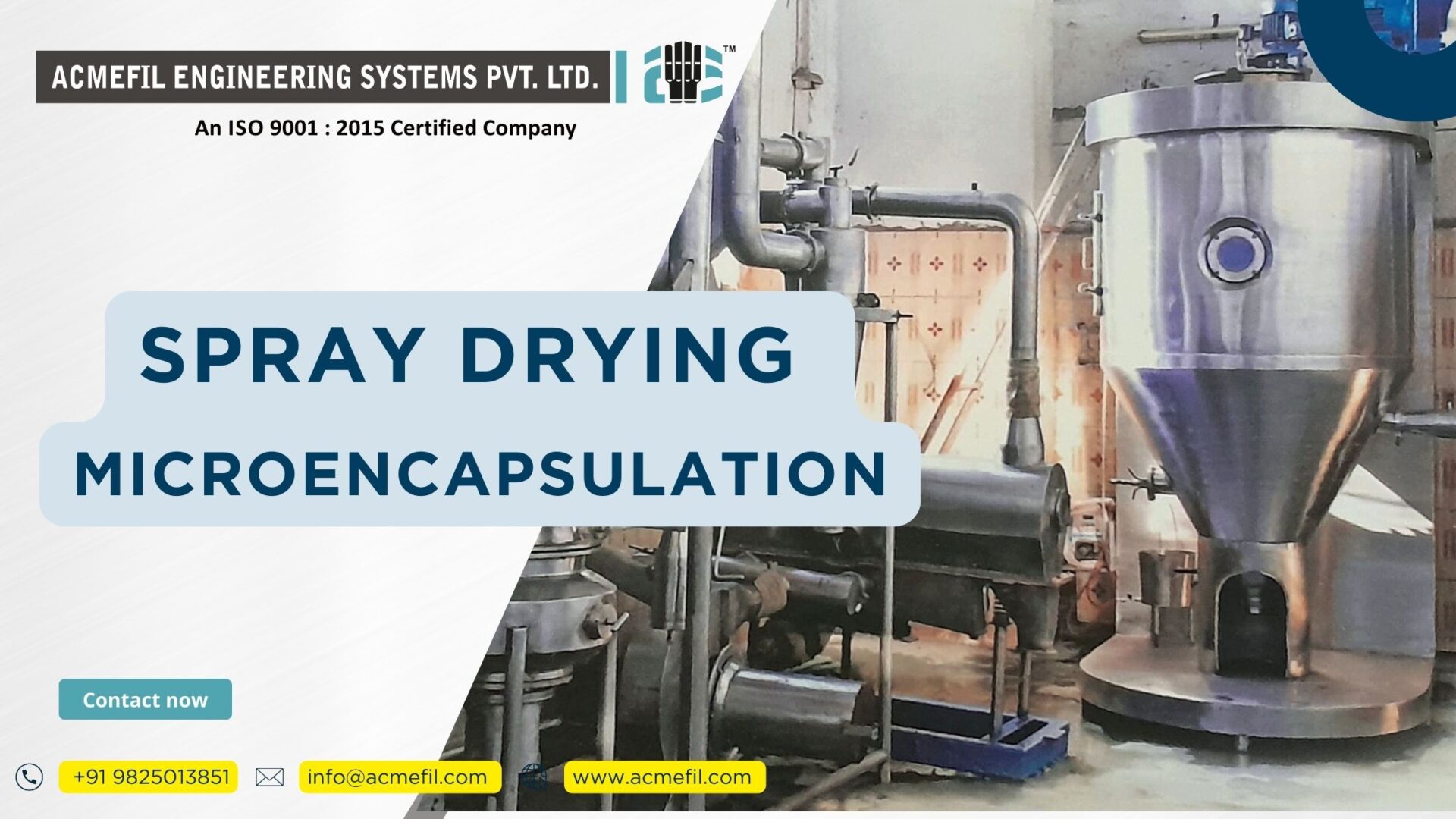Spray drying microencapsulation is a cutting-edge technology used to encase active ingredients in a protective shell. This technique preserves stability and enhances delivery. Various industries, including pharmaceuticals, food, cosmetics, and agriculture, use this process. In this blog post, you’ll explore the intricacies of spray drying microencapsulation, its process, benefits, and applications.
What is Spray Drying Microencapsulation?
Spray drying microencapsulation involves encasing tiny particles or droplets in a coating to form microcapsules. This protective barrier shields the core material from environmental factors such as moisture, heat, and light. As a result, it extends shelf life and improves functionality.
The Spray Drying Microencapsulation Process
SDM combines spray drying and microencapsulation. Here’s a step-by-step overview of the process:
- Preparation of the Feed Solution: Prepare a feed solution or suspension containing the core material (active ingredient) and the coating material. Typically, the coating material is a polymer or carbohydrate that forms a stable film around the core particles.
- Atomization: Atomize the feed solution into fine droplets using an atomizer. This step determines the size of the microcapsules. Atomizers can be rotary disks, pressure nozzles, or ultrasonic atomizers.
- Drying: The atomized droplets enter a drying chamber where they encounter hot air. The hot air evaporates the solvent from the droplets, leaving behind dry microcapsules. Carefully control the drying conditions, such as temperature and airflow rate, to ensure the integrity of the microcapsules.
- Separation and Collection: Separate the dried microcapsules from the air using a cyclone separator or bag filter. Collect the microcapsules for further processing or packaging.
Benefits of Spray Drying Microencapsulation
SDM offers several advantages over other encapsulation methods:
- Enhanced Stability: Encasing the core material in a protective shell significantly improves its stability against environmental factors such as moisture, heat, and light.
- Controlled Release: Microencapsulation allows for the controlled release of the active ingredient, which can be tailored to specific applications. This is particularly beneficial in pharmaceuticals, where controlled release improves drug efficacy and patient compliance.
- Improved Solubility and Bioavailability: Encapsulating poorly soluble active ingredients enhances their solubility and bioavailability, making them more effective in their intended applications.
- Masking Unpleasant Tastes and Odors: In the food and pharmaceutical industries, microencapsulation can mask unpleasant tastes and odors of certain ingredients, improving the overall sensory experience for consumers.
- Versatility: Spray drying microencapsulation is a versatile technique that can be used with a wide range of core and coating materials, making it suitable for various applications.
Applications of Spray Drying Microencapsulation
Spray drying microencapsulations find applications across diverse industries:
- Pharmaceuticals: Use microencapsulation to enhance the stability, solubility, and controlled release of active pharmaceutical ingredients (APIs). It also enables the development of taste-masked formulations and targeted drug delivery systems.
- Food Industry: In the food industry, microencapsulation protects sensitive nutrients, flavors, and bioactive compounds. This process enhances their stability and controlled release. It also helps mask unpleasant tastes and odors, improving the sensory properties of food products.
- Cosmetics: In the cosmetics industry, microencapsulation stabilizes active ingredients such as vitamins, antioxidants, and fragrances. This ensures their efficacy and longevity in cosmetic formulations.
- Agriculture: Microencapsulation improves the stability and controlled release of pesticides, herbicides, and fertilizers. This enhances their efficacy and reduces their environmental impact.
- Chemical Industry: Use microencapsulation in the chemical industry to protect and control the release of catalysts, enzymes, and other reactive compounds.
Conclusion
Spray drying microencapsulation is a powerful technique that offers numerous benefits, including enhanced stability, controlled release, and improved solubility and bioavailability. Its versatility and wide range of applications make it an invaluable tool in various industries. By understanding the spray drying microencapsulation process, you can optimize your production processes and achieve superior product quality. Whether you work in pharmaceuticals, food, cosmetics, agriculture, or chemicals, mastering spray drying microencapsulations can significantly enhance your product offerings and drive innovation in your field.


